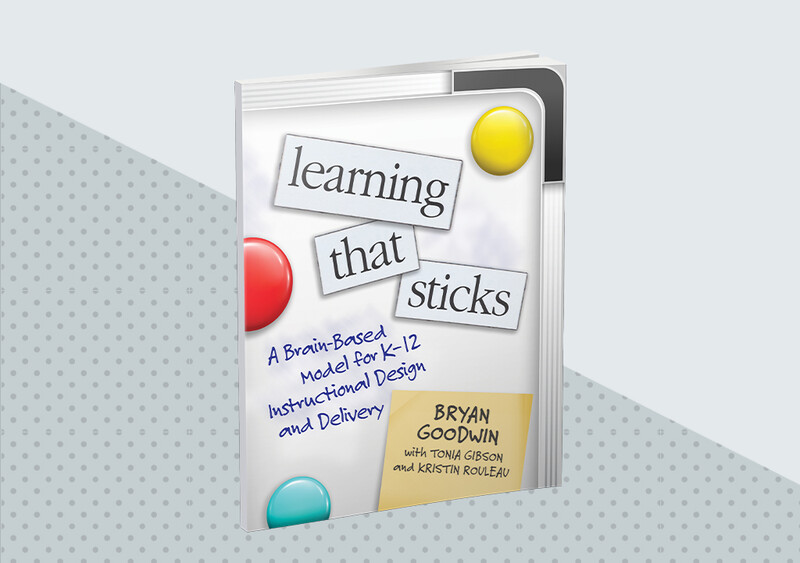We've all encountered unmotivated students for whom no amount of imploring, cajoling, or bird-dogging seems to move them to learn. Yet as the Greek mathematician Archimedes once famously stated, "Give me a lever long enough and a fulcrum on which to place it, and I shall move the world." Is there such a lever and fulcrum to move seemingly unmovable students? Research suggests there is.
Recently, in preparation for a new edition of Classroom Instruction That Works to be published with ASCD, my colleagues at McREL International and I conducted a systematic review of research on instruction that meets the federal government's What Works Clearinghouse standards for rigor. We viewed these studies through the lens of cognitive science; in particular, what we know about how our brains convert new information into long-term memory. Our search has unearthed compelling evidence for two straightforward instructional strategies teachers can use to motivate reluctant learners: (1) Cognitive interest cues, and (2) Personal goal setting. Here's how teachers can apply them in the classroom.
Cueing Cognitive Interest
Every moment, our brains are bombarded with millions of bits of information—far too much to process. Which means we tend to ignore most of what's happening around us, paying attention only to what we find interesting, novel, or compelling. The same goes for our students; they're hard-wired to ignore us and what's happening in our classrooms if it's boring. It's no surprise, then, that getting students curious about and interested in learning—what we've categorized as "cognitive interest cues"—has emerged in several empirical studies as a salient strategy for boosting student learning. Here are some research-based examples of instructional strategies that may spark students' cognitive interest:
Real-life problems. Giving high school students "enhanced anchored instruction" to connect math learning to concrete, real-life challenges (such as building a skateboard ramp) has been shown to significantly enhance both basic math skills and complex problem-solving skills (Bottge et al., 2015).
Hands-on learning activities. A study in low-income elementary schools found that students exposed to 12 weeks of hands-on learning experiences to stimulate their interest in science outperformed those in classrooms with traditional, textbook-based instruction (Guthrie et al., 2006).
Personal connections to learning. Students in high-poverty, urban middle schools who engaged in frequent writing exercises that asked them to make personal connections to challenging literary texts demonstrated significant gains in reading comprehension over students in business-as-usual classrooms (Stevens, 2003).
Curiosity-provoking questions. Eighth grade students whose teachers used video clips and thought-provoking questions to engage them in social studies lessons outperformed those whose teachers took a straightforward approach to teaching the same content (Vaughn et al, 2017).
In all these studies, cognitive interest cues were but one part of a larger intervention, so we cannot isolate precisely how much impact these cues had on learning. Nonetheless, the effect sizes of interventions that included cognitive interest cues were striking—equivalent to raising student achievement anywhere from 8 to 49 percentile points, which, depending on grade level, equates to several months to a year or more of learning.
Personal Goal Setting and Monitoring
Cognitive scientists have long noted that learning requires effortful thinking—something our brains prefer to avoid (Kahneman, 2011). To learn something, we must commit to learning it—often by setting and monitoring progress toward a personal goal that, in effect, reminds our brains to stay powered up. More than a dozen empirical studies, in fact, point to creating personal learning goals as a powerful strategy for improving student learning. Here are some guiding principles we can extract from the research:
Specific and challenging learning goals. Students who set specific goals outperform those with vague "do-my-best" goals. For example, experiments with 5th through 8th grade students writing persuasive essays found that students who were encouraged to set goals to consider the opinions of their audience and develop counter arguments wrote markedly better essays than students who merely set goals to improve their essays through re-writing (Midgette, Haria, & MacArthur, 2008).
Monitor progress. Empirical studies also show that student goals are more powerful when students monitor their own progress toward them (Fuchs et al., 2003).
Set goals for learning, not just getting a grade. Students achieve better outcomes when their goals focus on mastering new skills (such as learning how to write a good paragraph) rather than achieving an outcome (writing a good paragraph) (Schunk & Swartz, 1991).
The results of these studies are also compelling, with effect sizes equivalent to improving student learning from 16 to 47 percentile points. The guiding principle in all these studies, though, is that learning goals are only powerful if students internalize them as their own—when they use them to commit to learning.
The most important—and hopeful—takeaway from this research is that although students may challenge us with lack of motivation, no student is truly an unmovable object. They just need the right conditions. These two strategies provide both a fulcrum and lever to motivate reluctant learners by sparking their interest and encouraging them to set meaningful personal goals for learning.
Learning That Sticks
Bryan Goodwin's definitive guide to student learning.










